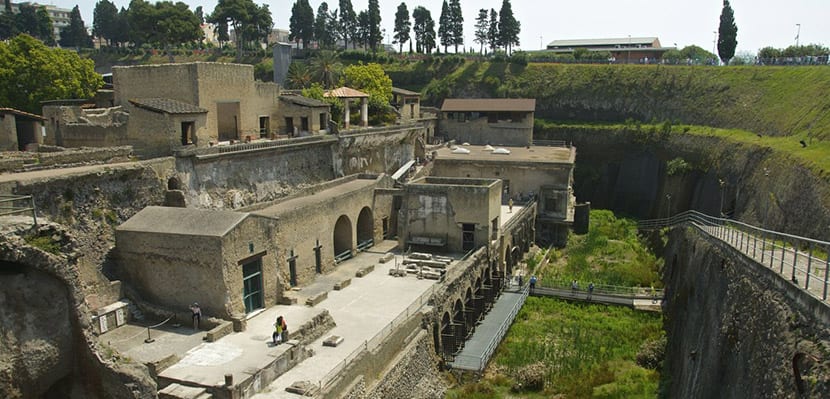
When dealing with Roman ruins Italy is the best destination. There are famous ruins everywhere and a virgin tourist cannot miss those of the Forum, the Colosseum or the Baths of Caracala, for example, but they are not the only ones.
It is true that there are more famous ruins than others but that does not always mean that they are more beautiful or worth visiting. And there are others that have hyper-famous neighbors that overshadow them a lot. It is the case of Herculaneum Ruins, neighboring the most popular ruins of Pompeii. I advise you to visit both and here I tell you why.
Herculaneum
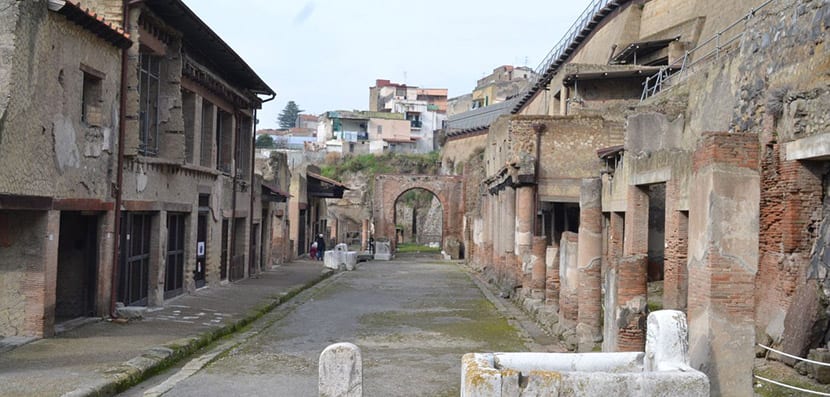
Like pompeii it was a city located at the foot of Vesuvius, the volcano whose explosion crushed them both in AD 70 It had Greek origins but in 89 BC it fell to the Romans. That eruption with its consequent and fatal pyroplastic explosion buried her under 20 meters of ash. That preserved it over time until it began to come to light in the 75th century, explorations continued and today it is more than XNUMX% totally excavated by archaeologists.
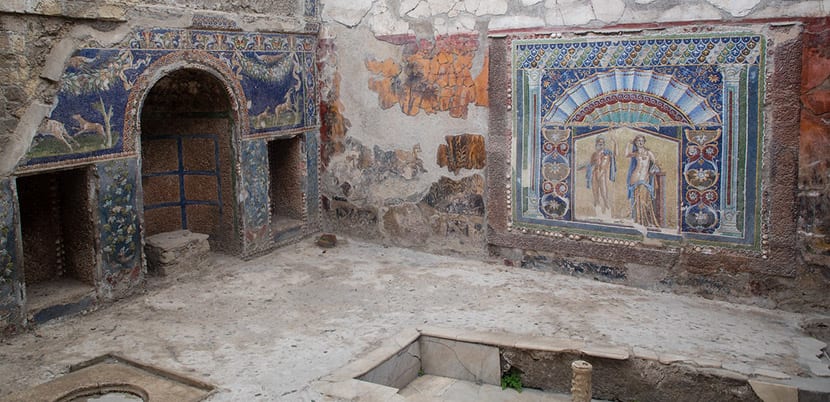
The first eruption of the volcano occurred on August 24 at noon and because the bulk of the ash fell on Pompeii, Herculaneum managed to be almost completely evacuated. Only the following night the column of rocks and ash that had risen in the sky collapsed and crushed the city located about 160 miles away. All the buildings, victims and objects were almost intact in many places and the damage was relatively little.
The ruins are organized in blocks organized around the cardinal axes and there are some particularly beautiful buildings that you cannot miss:
- Villa of Papyri: It is a luxurious villa that had the portrait of Julius Caesar's father-in-law. It has frescoes, bronze and marble sculptures and valuable papyri have been found inside in a charred state due to the high heat of the eruption. Most of it has been buried but some sectors have been cleaned. The front of the house is 250 meters above the coast of the Gulf of Naples, surrounded by a garden with porches and vineyards, it had a small port, a swimming pool and terraces. The most relevant finds are in the National Museum of Archeology in Naples.
- Hot springs: they were common in Herculaneum since like Pompeii it was a city of retreat. Here there are two differentiated areas, for men and women, and the pools were filled with water that came from more than 80 meters deep and was heated by a huge boiler and distributed by a pipe that also served as heating in winter.
- Alcove House: two linked buildings, with some decorated rooms, a covered atrium, precious frescoes and a marble floor.
- House of the Genius: There is still to be excavated here but the ruins are spacious. A nice statue of Cupid has been found here.
- House of Argus: It is believed that this villa was also luxurious and had two floors and even a balcony that is believed to have a wooden ceiling.
- Aristides House: It is not well preserved ruins due to the inefficiency of previous excavations but it is a large site.
- High school: It is a large building complex to the right of the ticket office.
- Neptune's House- It has some fabulous mosaics of Neptune and Poseidon's wife.
Otherwise you can walk through Cobbled streets, contemplate fcolorful rescos, mosaics centenarians and take a walk around the port area where many skeletons of people who died of heat (500 ºC) were found in the boat houses while trying to take shelter. The skeletons, hundreds, were found in 1981.
Such a finding changed history a bit since until then it was thought that the entire population of Herculaneum had been saved, but it also served a lot to learn about the nutrition and lifestyle of the people of the city at that time.
Visit Herculaneum
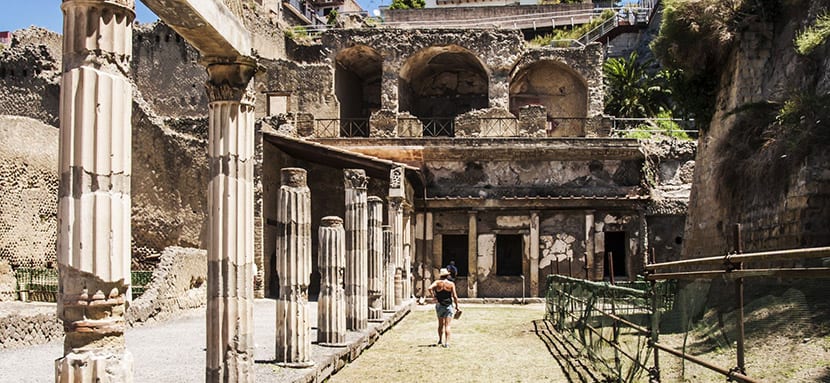
The ruins are in Ercolano, Corso Resina, 1, Via Alveo. You can get there by train from Naples. The entrance costs 11 euros but it may vary if there is a special event or exhibition. European citizens under the age of 18 enter free on the first Sunday of the month. If you buy the Campania ArteCard you can enter with it.
The ruins open from November 1 to March 31 from 8:30 am to 5 pm and between April 1 and October 31 from 8:30 am to 7:30 pm. The ticket office opens one hour before the opening hours of the ruins and half an hour before closing.
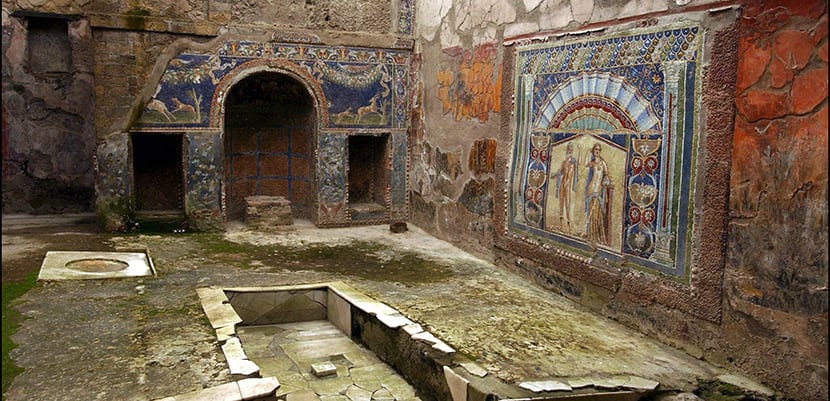
To protect the frescoes and the archaeological environment It is forbidden to enter with suitcases and large backpacks. You can leave your belongings in free lockers located at the entrance doors, but keep in mind that if you go in high season or peak hours, there may not be lockers.
Up to the ruins you can get there by public bus from Naples or by train from the same city or from Sorrente. Once you are at the Ercolano station, you will see a small square in front of it, cross it and walk about eight streets down the hill, along Vía IV Novembre, until you reach a large arch. You walk a couple more minutes and arrive at the front door with the ticket office. Before or after visiting the ruins you can sign up for a visit to Mount Vesuvius.

Regarding the archaeological site, keep in mind that the bathrooms are next to the audio guide shop (they must be returned at least half an hour before closing), and that you should bring water and food because there is no kiosk inside. Of course you have coffee shops and pizzerias outside the complex. Of course you can visit Herculaneum and Pompeii together. The combined ticket costs 20 euros and is valid for three days including other sites as well.